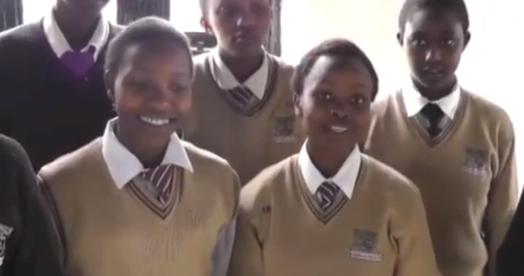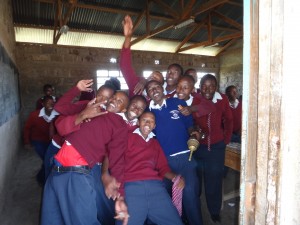 The founding philosophy of PA-MOJA is based on the idea that to protect the wildlife of eastern Africa you need to care for the people living within the region. The Ol Pejeta Conservancy is home to 4 of the remaining 7 Northern White Rhinos in the world. But the sad truth is that many Kenyans have never seen a rhino of any kind, even those living right beside the conservancy. The question that arises is how can wildlife be protected if many of the people living in the area are struggling to meet their basic needs and conservation is the least of their worries? According to John Muchiri, principle of Tigithi Secondary, the answer is education.
The founding philosophy of PA-MOJA is based on the idea that to protect the wildlife of eastern Africa you need to care for the people living within the region. The Ol Pejeta Conservancy is home to 4 of the remaining 7 Northern White Rhinos in the world. But the sad truth is that many Kenyans have never seen a rhino of any kind, even those living right beside the conservancy. The question that arises is how can wildlife be protected if many of the people living in the area are struggling to meet their basic needs and conservation is the least of their worries? According to John Muchiri, principle of Tigithi Secondary, the answer is education.
John was the motivating force in creating a connection between the Community Development Program at Ol Pejeta and Tigithi Secondary. He was looking to support one of his top students, Winnie, whose family was unable to pay for her education. He was linked with Gillian LaPrairie (a primatologist working with Ol Pejeta) and she soon established PA-MOJA as a means of connecting Kenyan schools with Canadian schools to encourage understanding and promote fundraising.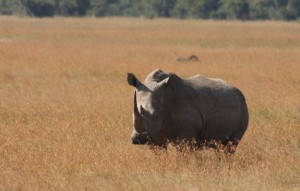
So how has John’s vision for improving education played a role in protecting the local wildlife of Ol Pejeta? According to John, the best way to get children to learn and care about the local wildlife is for them to “experience it for themselves.” Growing up, John’s family had very little money. He recalls learning about waterfalls in a book when he was young, but feeling disconnected and disappointed in the fact that he had never actually seen one. In order to provide these opportunities for his students, one of John’s first priorities at Tigithi Secondary was to buy a bus.
Although initially criticized for spending school funding on the bus ahead of the completion of their science labs, John believes the positive impact on student learning is apparent. As long as they book ahead, visits to Ol Pejeta are free for schools in the surrounding areas. 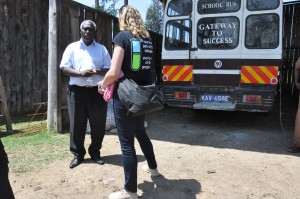 All of John’s students will have the opportunity to visit the conservancy and observe wild rhinos, elephants, and giraffes and hopefully make a real connection to the wildlife of the region.
All of John’s students will have the opportunity to visit the conservancy and observe wild rhinos, elephants, and giraffes and hopefully make a real connection to the wildlife of the region.
Tigithi students have also had the opportunity to take part in a range of trips 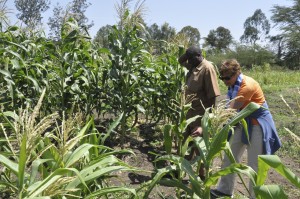 to Naivasha and the rift valley to study biology, geography and history and to local coffee and tea plantations when studying agriculture. John and the staff of Tigithi truly believe in a hands-on approach to education.
to Naivasha and the rift valley to study biology, geography and history and to local coffee and tea plantations when studying agriculture. John and the staff of Tigithi truly believe in a hands-on approach to education.
John has implemented other plans to help Tigithi grow and the students succeed. He has worked tirelessly to:
- optimize government and PA-MOJA funding through the development of sustainable practices
- seek out and hire teachers who motivate students and help them achieve higher standards
- improve the school’s infrastructure with the construction of new classrooms and a library
- create a new computer lab with internet on its way (with the help of PA-MOJA)
- provide students with better accommodation through new dorm facilities.
- Increase and maintain student enrollment
So what is the biggest challenge John and Tigithi are still facing? Getting kids to attend school. Fees in secondary schools are a big deterrent to student attendance, especially for boarding students who are the majority at Tigithi. John’s sustainable practices, including greenhouses to grow vegetables and cows supplying milk for lunches means the school’s ongoing costs are lowered. Every shilling saved is put towards supporting needy students who otherwise could not attend.
The success of the Tigithi school and its commitment to the wildlife of the area have given hope to those who care about the future of the northern white rhino and other at risk species within the Ol Pejete Conservancy and Kenya in general. With the continued support of PA-MOJA to provide bursaries for students at Tigithi as well as the provision of the classrooms and computer labs, John’s experiment in education is well on its way to success. As he states “in order to truly understand (and connect with) wildlife, students need to experience it”.
